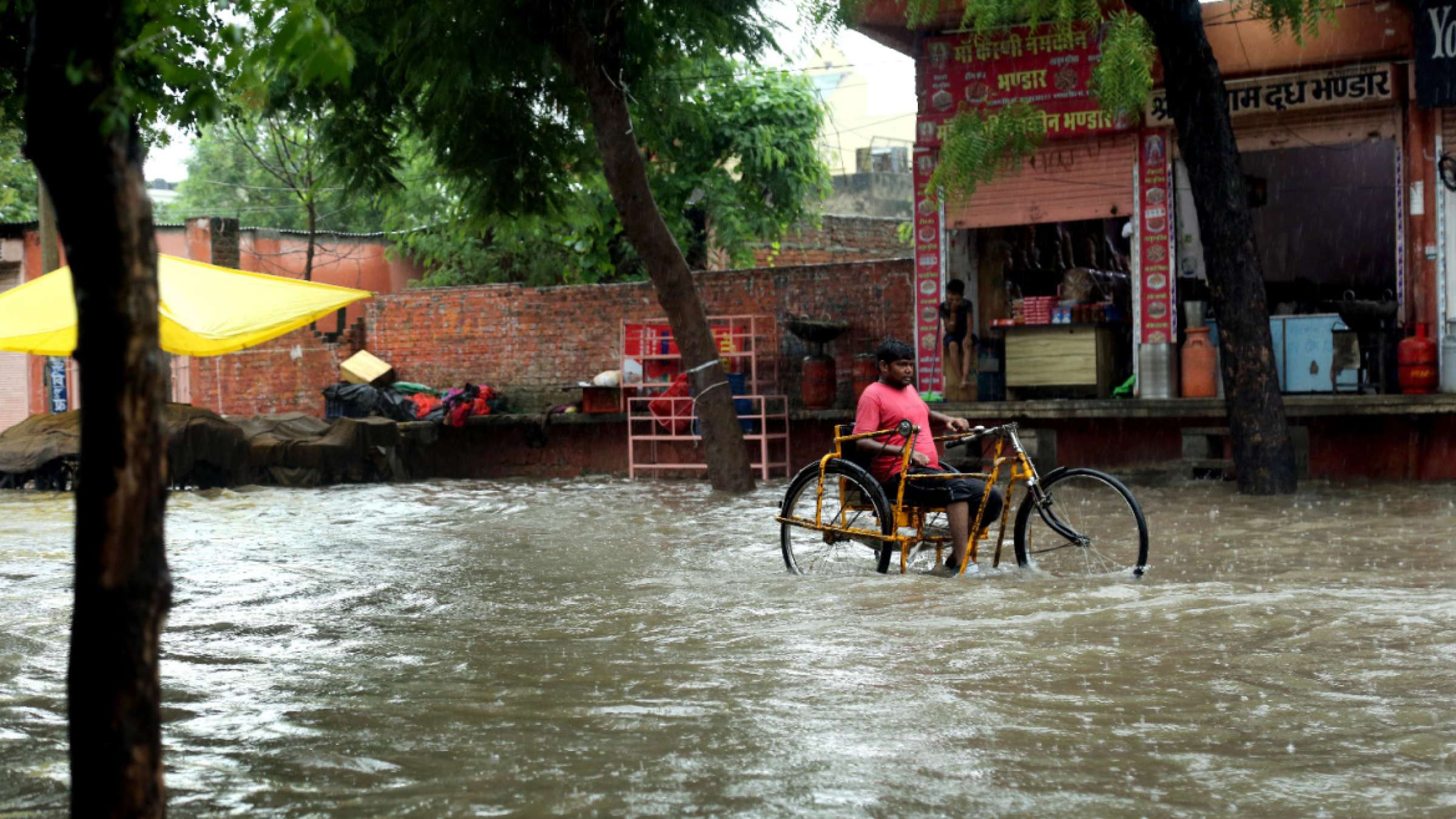
Persons with Disabilities (PwDs) constitute 16% of the world’s total population, that is 1.3 billion people, out of which 80% live in the Global South, as per the data from WHO 1. Despite forming a significant portion of the population the inclusion of PwDs across all policies, strategies or activities is negligible, more so in disaster management and risk reduction strategies. According to the recent United Nations Office for Disaster Risk Reduction (UNDRR) 2023 Survey Report on Persons with Disability and Disasters, although there has been an increase in the frequency of disasters worldwide, there has been no significant difference in disability inclusion in disaster risk reduction over the past 10 years.
There is no denying that climate change is casting a pervasive influence on our present and affecting diverse facets of our environment. The repercussions are manifold, encompassing a rise in average temperatures, heightened temperature variations, increased frequency of meteorological disasters like cyclones and storms, and escalating global phenomena. The increased frequency of climate change-induced disasters has led to the displacement of millions of people globally, disrupting their access to essential services and resources.
The impact is especially pronounced on marginalized groups, as it hinders their capability to access necessities such as food, safe drinking water and sanitation, health care services and medicines, education and training, adequate housing and access to decent work. The Intergovernmental Panel on Climate Change (IPCC) underscores that these vulnerable groups will bear the brunt of adverse health impacts, livelihood and income loss, hunger, displacement, and insufficient resources for migration out of disaster-hit zones.
In response to the escalating climate challenges and the disproportionate impact on marginalised groups, the report on 'Developing Inclusive Disaster Risk Reduction' emphasizes the necessity of incorporating marginalized groups at all levels. It also aligns with the 2030 Agenda and the Sustainable Development Goals (SDGs) commitment to “leave no one behind”. The report aims to understand the impact on marginalized persons, assess existing policies and best practices (International and National), and propose an inclusive approach to disaster risk reduction and climate resilience based on impact analysis, existing policies, and best practices.
India, along with other South Asian countries, is particularly susceptible to climate change- induced disasters due to its diverse geography. It is prone to witness impacts including, irregular and prolonged heat and cold waves, droughts, and meteorological disasters such as floods, cyclonic storms and hurricanes and floods, resulting in the displacement of communities and impacting vulnerable groups profoundly.
During these climate change-induced disasters vulnerable groups including persons with disabilities, children, elderly and women, may lose their essential medicines, and assistive devices, and also have much difficulty in accessing basic services. Besides this, they are often the last ones to be included in the emergency plans or any other disaster management efforts, which limits their capacity to observe safety instructions and evacuation plans. Though they might face similar economic losses as the rest of their community, they tend to have much more difficulty in securing additional resources, displacing or recovering from the loss.
This stresses the need for an Integrated Approach and Decision-making as a means to promote Inclusive Disaster Risk Reduction (DRR) to help PwDs achieve and not deny their rights to accessibility, safety and security, social protection and relief, migration, and thereby, climate resilience. A disability-inclusive human rights-based approach is crucial in climate change mitigation and adaptation efforts. This approach emphasizes the active participation and representation of persons with disabilities at all stages of decision-making, ensuring their specific vulnerabilities, needs, and solutions are considered.
The report also identifies the ‘Twin-Track Approach’ that advocates ‘specialist disability initiatives’ designed to include and empower persons with disabilities and the ‘mainstreaming’ of disability inclusion into all policies, strategies and activities. It emphasizes the involvement of local communities and authorities by strengthening their coordination and clearly defining their roles and responsibilities during a crisis. The need to develop strategies with and by persons with disabilities is crucial for an integrated approach.
Climate change-induced disasters have a direct and measurable impact on the marginalized population including persons with disabilities. Through the study, certain issues and gaps are identified including the unavailability of spatial disaggregated data of persons with various types of disability, lack of understanding of diverse needs of the marginalised groups as well the physical challenges associated with evacuations with these groups. There is also a lack of universal accessibility in the infrastructure and the emergency response system and the information in accessible formats, especially in emergency or evacuation situations, is also absent.
Based on the study's findings, a seven-step approach is recommended to facilitate an inclusive response to climate change-induced disasters. This approach advocates evidence- based planning, addressing policy implementation gaps at the local level, learning from global good practices, integrating universal access, emphasizing intersectionality, and augmenting the capacities of stakeholders at various levels.
In conclusion, the imperative for an inclusive resilience approach is paramount to address the diverse needs of marginalized populations, especially persons with disabilities, in the face of climate change-induced disasters and to achieve the SDGs. Moreover, the theme of International Day for Persons with Disability (IDPD) 2023, calls for “United in action to rescue and achieve the SDGs for, with and by persons with disabilities." To create an inclusive society the active participation of everyone is crucial so that everyone is represented and no one is left behind. By adopting an inclusive and rights-based strategy, communities and policymakers can build resilience, ensuring that there is a united effort in the response, recovery, and rehabilitation phases.
Author: Aishwarya Bali, Jr. Program Associate, Inclusive Cities Centre, National Institute of Urban Affairs
Image Source:https://www.undrr.org/news/un-2013-global-survey-explains-why-so-many-people-living-disabilities-die-disasters
Add new comment